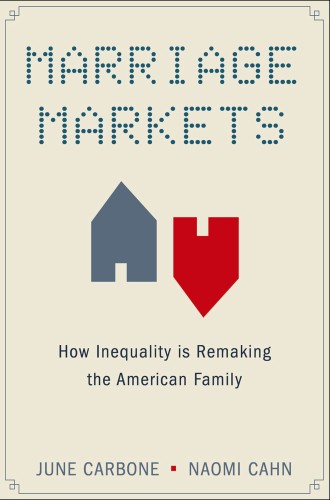Marriage Markets, by June Carbone and Naomi Cahn
This volume follows the life trajectories of two couples: Amy and Tyler, and Lily and Carl. Both couples could live near your congregation. They love each other and will have children together, but only Amy and Tyler will set a wedding date and get married. Law professors June Carbone and Naomi Cahn explain why.
Amy and Tyler meet in law school, wait until their late twenties to marry, and hold off on having children until they have weathered several geographic moves and both are settled into their careers. They follow what the Brookings Institution calls the success sequence: graduate high school, get married, and then have children. Amy and Tyler see marriage as an asset and a safety net that frees them to invest intentionally and well in the next generation.
What about Lily and Carl? Lily is four months pregnant, unmarried, working two jobs, and trying to fix a broken-down car. Carl doesn’t have a job and lives with his mother. Carbone and Cahn write about people in such situations:





